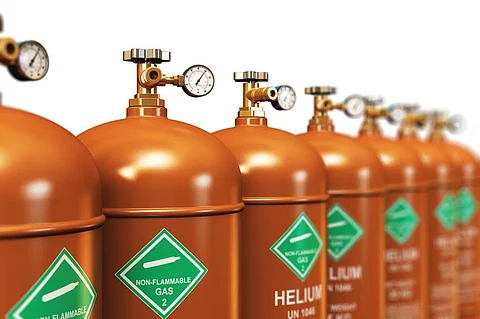

Helium, the second most abundant element in the universe, is in short supply on Earth. But reservoirs of this gas, with no carbon footprint, likely exist in geological formations beneath the Earth, according to a new study.
Researchers have proposed a new model that could help the world tap into helium reserves to address shortage issues, the study published in Nature journal highlighted.
The market for helium is valued at $6 billion, with the gas finding applications in MRI scanners, computer chips and fibre optics manufacturing and nuclear applications.
The prices of helium have skyrocketed in recent years due to shortage. Further, supply from Russia due to the war with Ukraine has been disrupted, according to media reports.
This gas is typically produced as a byproduct of natural gas production. “If helium concentration in the drilled gas exceeds 0.3 per cent, it is economically favourable to add another step to separate helium from natural gas,” Anran Cheng from the University of Oxford and the lead author of the study, told Down To Earth.
This process also comes with a high carbon footprint as helium production is related to drilled natural gas or oil. Cheng and her colleagues wanted to locate new reservoirs of carbon-free helium using a model.
The gas can be produced and stored in crystalline basement rocks, dense rocks that extend from the mantle to the near-surface or surface, according to the model.
These rocks naturally contain uranium and thorium, both of which decay to form helium naturally.
“These rocks are 30-40 kilometre thick. They have also existed for millions or billions of years, allowing large amounts of helium to be produced and stored,” Cheng said.
The helium dissolves in water present in rock pores. Cheng said that separating helium from water is quite expensive.
But previous studies provided a clue. Nitrogen and helium are co-produced from crystalline basement rocks. This could provide a route, the author said.
For example, in sparkling water, the gas bubbles out because its concentration in the water is higher than its solubility.
Similarly, when nitrogen concentration is high enough, it will form bubbles. Helium, too, migrates from the water into the bubble phase. “Over time, these bubbles will accumulate to form a big gas body dominated by nitrogen but enriched by helium as well,” Cheng explains.
Read more: Big helium reserve found in Tanzania
These rocks could also be a source of hydrogen. Their model showed that energy generated from the radioactive decay of uranium and thorium could split water to form hydrogen.
Natural gas is currently the primary source of hydrogen production, according to the International Energy Agency.
Hydrogen-rich underground deposits, the researchers said, could provide an alternative carbon-free source.
“The amount of hydrogen generated by the continental crust over the last 1 billion years could power society’s energy needs for over 100,000 years,” Chris Ballentine from the University of Oxford and the study’s co-author, said in a statement.